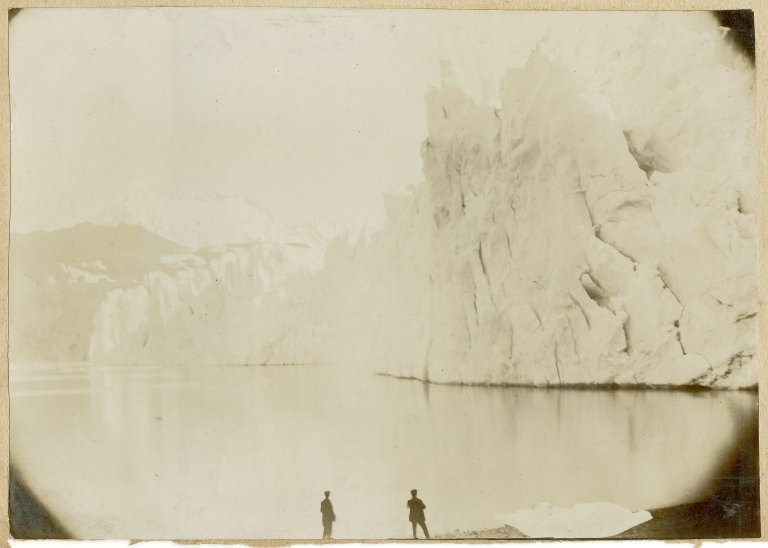Category: Weekly Blog
Initial ideas (Morrison, C, composer)
The effect of presence and absence are really interesting to me, and how things can be affected by absence and presence of objects, sounds, people, etc. The idea of live performance mixed with sound installation as a concept emerged for me, dealing with the presence/absence of the ‘virtual’ sounds (electronics) and the ‘real sounds’ (improvised acoustics).
Other related thoughts, which ties into the blend of ‘real’ and ‘virtual’, the presence/absence of either object changes what the art form is contextualized as. When there is no acoustic element, the work is sound art/sound installation. When there is both, it is electroacoustic music/’performance art’(?). Where there is only a musician, it then becomes freely improvised music. If there is a visual element, I believe the improviser (most likely myself) should be blindfolded, so as to not be distracted by the visuals.
Really need to consider the practicality of using VR, lighting systems may be better, and VR may limit the experience to a small group of people. Using Unity with projectors could also work, might possibly be better to work with.
Here is a produced idea, representing ideas of reflection, a mirror harmony, which reflects different musical intervals in a vertical space (Perschetti, 1961, p. 173) This sounds uses a MIDI vibraphone, reversed, with added delay, reverb, and a wee bit of chorus.
Here is what it looks like in staff notation.
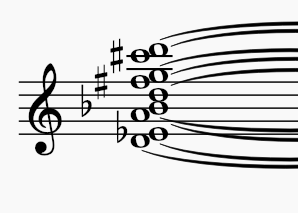
week2_ideas_Jingqi Chen
Presence makes me think of the fact that although people physically exist in the real world, there is often a piece of their own “virtual world” in everyone’s heart, where there is a scene completely different from the real world, like the ideal country of presence that contains everyone’s consciousness. So the “presence” of the difference or the link between the real world and the virtual world is something that I want the participants to experience in an immersive way.
The following is an outline of a feasible theme that I have temporarily summarized according to our ideas we put forward in class. On top of that I added a few details, some illustrations and examples.
- Software:Unity
- Technology:VR <We can try to do VR with unity first, and if the implementation is not suitable in the future, we can change to lighting>
- Theme:Feel the presence/coexistence of the real world/negative emotions(stress, anxiety, depression…)and the virtual world/positive emotions(unpredictable, unknown, intrigued…).
- Form

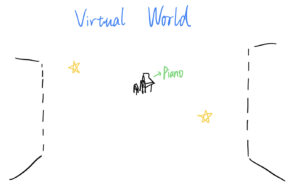
- Content
Real World:There are many doors in a narrow corridor, and when the player opens the doors, the corresponding pictures begin to show the real world (anxiety at work, irritability at school, panic at family arguments…).
Virtual World:After the player comes out of the corridor is an unknown only white environment, from time to time there may be some magical phenomena, such as a piano that no one is playing makes a beautiful piano sound.
- Sound
Real World:realistic, immersive
Virtual World:large reverb and delay, electronic
week2_ideas_Ruojing Chen
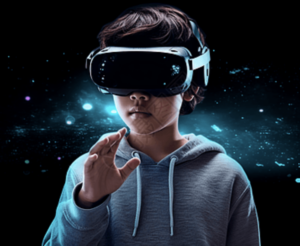
DETAILS
For the real world, we make more attempts to materialise the emotions we want to express, such as what kind of depression is caused by depression, which comes from family, work, study, etc.
How many emotions do we want to express? We need to construct the scene according to different emotional words. Depression, anger, happiness, sadness… Through unity technology, we need to restore the picture. The picture is our weakness, and we can build the picture in a way that is as simple as possible.
Or we don’t need too many emotional pictures but focus on an emotional word to unfold. For example, when we choose words, anger shows the anger scenes that we will encounter at different ages. ( This is what I suddenly thought of) will be more targeted.
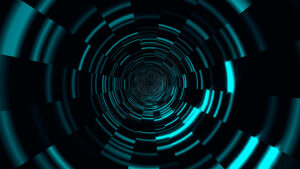
As for the virtual scene. Dreamy abstract, on one side is the emotional black hole of the real world, and on the other side is a pure white abstract empty world. In addition to piano music, there is also a lot of space for sound painting in pure white space. For example, we can design some warm patterns or decorations in a pure white space, and each decoration randomly triggers the sound of joy or ethereal sound effects or warm scenes (scenes restored with sound effects), such as some non-real sound effects representing the ethereal angel bling sound, or Realistic sound effects, such as the muffled sound at the bottom of the water – which means the source of life wrapped in the mother’s amniotic fluid, or the baby’s laughter… These designs are triggered at any time in the pure white space, and may not be visually transmitted in time, but the sound can be clearly constructed.
The whole idea is more like a game space, in which players switch and trigger scene sounds, thus feeling an immersive experience.
Week2_Idea_Yuan_Mei
Immerse in dreams and emotions
- Presence is the psychological sense of “being there”, of actually being immersed in and surrounded by the environment (Mathivanan, 2017).
Overview
From my point of view, presence means immersion. This word makes me think of immersing in dreams and emotions with music, sound and visuals.
This idea is inspired by Tarkovsky’s film, Mirror. In the scene where the mother washes her hair in the bathroom, the soundscape does not match the moving image, creating dissonance and a mysterious dream-like feeling.
Regarding what we discussed in the class, Jingqi’s idea of being in between reality and the virtual world, as well as the idea from Ruojing, who talked about getting tired in reality and escaping from reality to a relaxing place, can be combined with my idea of immersing in emotions. Integrating my idea of doing an immersive environment, I think we can create a visual virtual component by using unity to design two spaces with two opposite emotions through music and sound, immersing people in these emotions. The first space can represent reality, and in this space, we might have some negative emotions in several scenarios in real life, such as depression, anger, pressure, etc. After entering a portal, audiences can reach the second space, a dreamlike place with soft, gentle sounds and music. In this space, the background in the visual could be empty (just pure white), and at the centre, there is a piano playing music.
Software
- Unity
- Wwise
- VR
Sound Design
- Interactive Audio
- Emotions
Visuals:
- Abstract Images


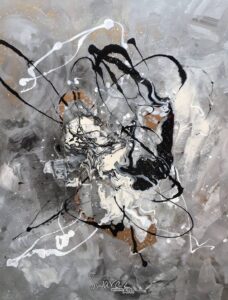
Welcome!
Welcome to your new blog site!
This is your first post. You can edit this or delete it and start blogging.
You should read the Terms of Use if you haven’t already.
For help and advice on getting started with a WordPress blog, see the Academic Blogging help pages.
Your blog is private by default
You can open your blog up to as many or as few people as you like in Dashboard > Settings > Reading > Site Visibility:
- You can open your blog up to specific University members by adding them as users to your blog.
- You can open your blog up to all University members who have an EASE login.
- You can make you blog open to the world.
The featured image on this post comes from the University Collections. If you want to use more images in your blog posts, or perhaps use your own choice of image in your blog header, you can:
- Browse a selection of images on Flickr from the Collections that are available for you to use on open licenses.
- Search the full online image collections.
- Find more information about searching for and using openly licensed images on the Open.ed site.
